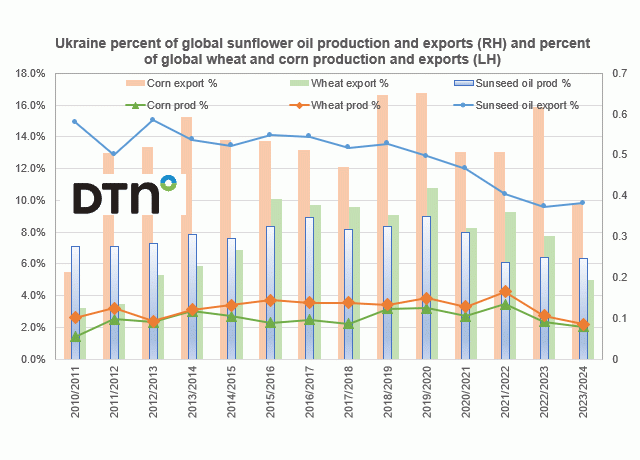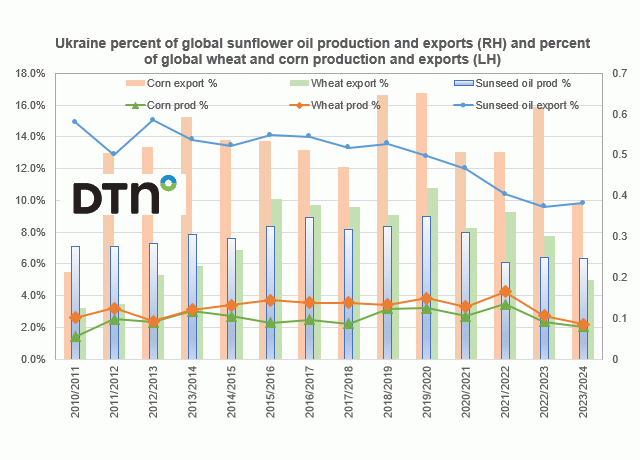Fundamentally Speaking
US Spring Wheat Conditions
Contrary to trade expectations, the U.S. spring wheat crop actually showed additional improvement this past week as the percent of the crop rated in either the good or excellent categories increased by 1% to 71% and was well ahead of the year ago figure of a mere 11% which, other than 1988, is the lowest combined percent of the two top categories ever.
Using our usual ratings system where we weight the crop based on the percent in each category and assign that category a factor of 2 for very poor, 4 for poor, 6 for fair, 8 for good, and 10 for excellent and then sum the results, this chart shows the week 28 (around the third week of July) crop ratings for the U.S. spring wheat crop on the left-hand axis vs. the percent that the final wheat yield deviates from the 25-year trend on the right-hand axis.
P[L1] D[0x0] M[300x250] OOP[F] ADUNIT[] T[]
We also report the percent of the spring wheat crop heading as of week 28 with the red numbers in the yellow squares.
This year's week 28 spring wheat rating of 748 is decent, above the 20-year average of 721 and the full 1986-2022 average of 713 and of course dwarfs the year ago 440 rating which, other than the 404 rating in 1988 -- also a year in which the key spring wheat producing states were ravaged by drought like in 2021 -- is the lowest since the USDA started national ratings in 1986.
Earlier this month, USDA in its first estimate of the U.S. spring wheat crop pegged the 2022 yield at 47.0 bushels per acre (bpa), well above the year ago 32.6 bpa but below this year's 25-year trend of 47.4 bpa which is down quite a bit from last year's 25-year trend of 49.8 bpa due to the horrible 2021 yield now being used in the trend calculation.
A couple of observations are that this year's 68% of the crop heading rather low, in fact the lowest since 2011 and the fifth lowest since 1986 due to the late start in plantings this year based on a cold and wet spring.
There is mixed evidence as to what this does for yields but running a regression using both percent headed and crop ratings as of the third week of July calculates to a final yield this year 3.4% above trend, or 49.0 bpa, which would be a new record high.
Given that the spring wheat states have been beneficiaries of rains riding up and over the high pressure ridge that has been moving from the Rocky Mountains to the Corn Belt and back again frequently can't argue with that assumption.
(c) Copyright 2022 DTN, LLC. All rights reserved.





Comments
To comment, please Log In or Join our Community .